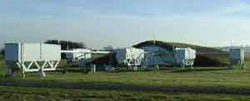
“Friendly” bacteria (probiotics) given to babies during weaning may help alleviate the symptoms of eczema, suggests research in Gut.
The researchers studied 21 infants who already had evidence of atopic (allergic) eczema, and were at heightened risk for chronic allergic disease.
When the babies were weaned onto hydrolysed whey formula feed, eight of them reacted adversely to it. Among the remaining 13, seven were fed the formula supplemented with probiotic bacteria – Bifidobacte

Alcohol is unlikely to protect drinkers from the risk of developing adult onset (type II) diabetes, concludes research in the Journal of Epidemiology and Community Health. Alcohol seems to confer only a slight advantage in moderate drinkers, the research shows.
To date, the effects of light to moderate alcohol consumption on the risk of developing adult onset diabetes remain unclear.
The researchers monitored over 5000 men between the ages of 40 and 59 for almost 17 years. None of t

Researchers have discovered a possible added benefit of hormone replacement therapy: saving teeth.
Postmenopausal women who took a daily dose of estrogen along with calcium, vitamin D and regular dental check-ups improved the condition of their jaw, which could potentially reduce the risk of tooth loss. Women who had regular check-ups but took only calcium and vitamin D also improved jaw mass and density, though to a significantly lesser extent than those who received estrogen.

Scientists from the University of Cambridge’s Astrophysics Group have today (21 June 2002) announced a collaboration with teams based in New Mexico, Puerto Rico and at the Naval Research Laboratory in Washington DC to design, install and operate a novel type of astronomical telescope for ultra-high angular resolution observations of stars, galaxies and quasars.
The agreement between researchers based in the Astrophysics (AP) Group at the Cavendish Laboratory and the Magdalena Ridge Observato

Taking their cue from fish, scientists in the US have built a navigational aid that will help robots and remote sensors find their way around the world`s vast oceans. The team describes its research today in the Institute of Physics publication Journal of Micromechanics and Microengineering.
Fish and many amphibian animals find their way through even the murkiest of waters, navigate raging torrents and spot obstacles, predators and prey using a sensory organ known as the lateral line system.

According to fellow phycologists, algae expert Stefan Draisma from the Leiden University has turned brown algae phylogeny completely upside down. His research shows that few of the currently assumed relationships between the orders are correct. Furthermore, it transpires that some simple species arose not earlier but later than more complex species.
Brown algae are multicellular algae. Brown pigments mask the green colour of the chlorophyll. Most of the species occur in temperate regions. Th

– new calculation confirms standard model of particle physics. Contribution of hadronic vacuum polarization determined with unprecedented accuracy. The magnetic moment of the muon is an important precision parameter for…
Technique may prevent formation of unwanted waves that siphon off needed energy. Heating plasma to the ultra-high temperatures needed for fusion reactions requires more than turning the dial on a…

An international team of astronomers, led by researchers from the Astronomical Observatory of the University of Warsaw, have identified a new class of cosmic X-ray sources. The findings have been…

How deubiquitinases USP53 and USP54 cleave long polyubiquitin chains and how the former is linked to liver disease in children. Deubiquitinases (DUBs) are enzymes used by cells to trim protein…

Conceptual blueprint to analyze experimental catalyst data. Machine learning (ML) models have recently become popular in the field of heterogeneous catalyst design. The inherent complexity of the interactions between catalyst…

Antibody that Neutralizes Inhibitory Factors Involved in Nerve Regeneration Leads to Enhanced Motor Function after Acute Spinal Cord Injury. Researchers at 13 clinics in Germany, Switzerland, the Czech Republic and…

How simulations help manufacturing of modern displays. Modern materials must be recyclable and sustainable. Consumer electronics is no exception, with organic light-emitting diodes (OLEDs) taking over modern televisions and portable…

“Neurons that fire together, wire together” describes the neural plasticity seen in human brains, but neurons grown in a dish don’t seem to follow these rules. Neurons that are cultured…

The quest for sustainable energy solutions has been a major focus of scientific research for decades. Solar energy, a clean and renewable source, has emerged as a promising alternative to…

With a processing speed a billion times faster than nature, chip-based laser neuron could help advance AI tasks such as pattern recognition and sequence prediction. Researchers have developed a laser-based…

New technology could remotely identify various types of plastics, offering a valuable tool for future monitoring and analysis of oceanic plastic pollution. Researchers have developed a new hyperspectral Raman imaging…

Artificial Intelligence (AI) has established a strong presence across industries, large and small. The “VoBaKI” research project has empowered small and medium-sized enterprises (SMEs) with an innovative tool to independently…